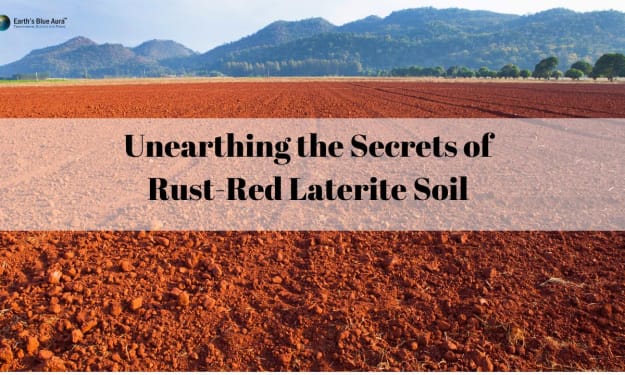Nostalgia and Longing
Evoke a sense of nostalgia for pristine environments or experiences from the past that have been altered or lost due to climate change. Explore the bittersweet emotions of longing and the desire to preserve and protect what remains

Part 1: A Lost Oasis
In a small coastal town named Evergreen Bay, nestled between rolling hills and a sparkling sea, there existed a hidden gem known as Sunflower Valley. It was a place of unparalleled beauty, where lush green meadows met towering forests, and crystal-clear streams flowed with untamed grace.
Sarah, a young woman with an insatiable curiosity for nature, spent her childhood exploring Sunflower Valley. She would spend hours running through the fields, feeling the soft blades of grass between her toes. She would climb the ancient oak trees, their branches becoming her secret hideouts. And she would listen to the symphony of birds, their melodies echoing through the valley.
But as the years passed, Sarah returned to Sunflower Valley with a heavy heart. Climate change had cast its relentless shadow over her beloved sanctuary. The once-vibrant meadows had turned into parched wastelands, the wildflowers that once danced in the breeze had withered away, and the streams had become mere trickles, choked with debris.
Part 2: Echoes of the Past
Sarah, overcome with nostalgia and longing, found solace in the few remaining fragments of her childhood paradise. She traced her fingers along the fading photographs of blooming meadows and sprawling forests, her heart aching for the vibrant world that had been lost. Each image told a story of a time when nature thrived, untouched by the changing climate.
She spent hours reminiscing, losing herself in the memories of chasing butterflies among the wildflowers, the sweet scent of honeysuckle in the air, and the laughter of children echoing through the valley. These moments of nostalgia kept her connected to a world that felt just out of reach.
Part 3: A Cry for Help
Determined to protect what remained of Sunflower Valley, Sarah embarked on a journey to raise awareness about the devastating effects of climate change. She became an advocate for environmental conservation, attending rallies, and speaking passionately about the urgent need for action.
But her efforts felt futile against the enormity of the challenge. The bittersweet emotions of longing and a desire to preserve what remained weighed heavily on her shoulders. How could she bring back the vibrant world she once knew? How could she protect the innocent creatures that had vanished from the valley?
Part 4: A Glimmer of Hope
As Sarah continued her fight, she encountered others who shared her longing and determination. Together, they formed a grassroots movement called "Echoes of Sunflower Valley." They organized restoration projects, planting native species in the barren meadows, and cleaning up the polluted streams.
The community rallied behind their cause, each member connecting with their own memories of the valley's lost beauty. They poured their love and dedication into nurturing the land, hoping to rekindle the spirit that had once thrived there.
Part 5: A Healing Journey
Months turned into years, and as the community's efforts began to bear fruit, a transformation took place in Sunflower Valley. The meadows slowly came back to life, painting the landscape with vibrant hues of purple, yellow, and pink. The streams once choked with debris, flowed freely once again, their music mingling with the rustling leaves.
Sarah, standing in the midst of the rejuvenated valley, felt a mixture of joy and sadness. The beauty that had been restored brought a sense of hope, but it also reminded her of what had been lost. The bittersweet emotions overwhelmed her as she realized that the valley could never fully return to its former glory.
Part 6: A Legacy Preserved
Sarah understood that the fight to protect the environment was an ongoing battle, but she refused to let despair consume her. The memories of Sunflower Valley's past, though tinged with sorrow, fueled her determination to create a better future.
She turned her attention to educating the younger generation, sharing stories of the valley's history and the importance of preserving the natural world. Through workshops and community initiatives, she inspired a new wave of environmental advocates, ensuring that Sunflower Valley's legacy would live on.
Part 7: Whispers of Gratitude
As Sarah stood among the wildflowers, their petals dancing in the gentle breeze, she felt a profound sense of gratitude. The valley had changed, but it had not been lost entirely. It had become a symbol of resilience, a testament to the power of human connection and the unwavering spirit of those who refused to let go of their cherished memories.
In the echoes of the wind, Sarah heard whispers of gratitude from the valley itself. It thanked her for her tireless efforts and for refusing to let its beauty fade away completely. It reminded her that though some battles are lost, the war against climate change could still be won.
As the sun set over Sunflower Valley, Sarah vowed to continue her fight, knowing that the emotions of longing and the desire to preserve and protect what remains were shared by countless others around the world. And with that, she took her place as a guardian of the valley, a beacon of hope in the face of an uncertain future.
Climate change is one of the most pressing global challenges of our time, and it requires collective action from both individuals and governments to effectively address its causes and mitigate its impacts. Both individuals and governments have distinct roles and responsibilities in tackling climate change, and their actions are crucial for a sustainable and resilient future.
Individual Responsibility:
Individuals play a vital role in combating climate change through their everyday choices and behaviors. Here are some ways individuals can contribute to the cause:
a) Sustainable Consumption: Making conscious choices regarding what we consume can significantly reduce our carbon footprint. This includes opting for energy-efficient appliances, reducing meat consumption, supporting local and sustainable products, and practicing responsible waste management.
b) Energy Conservation: Taking steps to conserve energy can make a significant difference. This involves using renewable energy sources, improving home insulation, reducing water consumption, and adopting energy-efficient transportation methods such as walking, biking, or carpooling.
c) Raising Awareness: Individuals can engage in conversations about climate change, sharing knowledge, and raising awareness within their communities. By inspiring others to take action and creating a culture of sustainability, individuals can have a ripple effect on collective behavior.
d) Advocacy and Engagement: Getting involved in climate change advocacy, supporting environmental organizations, and participating in grassroots movements can amplify individual voices and put pressure on policymakers to take meaningful action.
Government Responsibility:
Governments hold a crucial role in enacting policies and implementing strategies to address climate change on a larger scale. Here are some key areas where governments can contribute:
a) Policy Implementation: Governments should develop and implement comprehensive climate change policies that promote renewable energy adoption, energy efficiency, sustainable land use, and the reduction of greenhouse gas emissions. Policies can also encourage research and development of clean technologies.
b) International Cooperation: Climate change is a global challenge that requires international cooperation. Governments should actively engage in international climate negotiations, commit to reducing emissions, and support climate finance mechanisms to assist developing countries in their climate change mitigation and adaptation efforts.
c) Investment in Infrastructure: Governments can allocate funds for the development of sustainable infrastructure, including public transportation systems, renewable energy projects, and resilient urban planning. Investments in green technologies and innovation can create new job opportunities and foster economic growth.
d) Regulation and Enforcement: Governments have a responsibility to regulate industries and enforce environmental standards to reduce pollution and promote sustainable practices. This includes setting emissions standards, implementing carbon pricing mechanisms, and establishing regulations to protect natural resources and ecosystems.
e) Education and Awareness: Governments can play a vital role in educating the public about climate change, its impacts, and the importance of sustainable practices. By integrating climate change education into school curricula and raising awareness campaigns, governments can empower citizens to make informed decisions.
It is crucial to recognize that individual and government responsibilities are intertwined and must complement each other. While individuals can make a difference in their personal lives and local communities, governments have the power to enact systemic changes that can drive large-scale transformations. By embracing their respective responsibilities, individuals and governments can work together to address climate change and create a sustainable and resilient future for generations to come.
About the Creator
Adamu Habib
I am a Believer..
Enjoyed the story? Support the Creator.
Subscribe for free to receive all their stories in your feed. You could also pledge your support or give them a one-off tip, letting them know you appreciate their work.






Comments (5)
nice piece
Cool
cool
cool
Nice